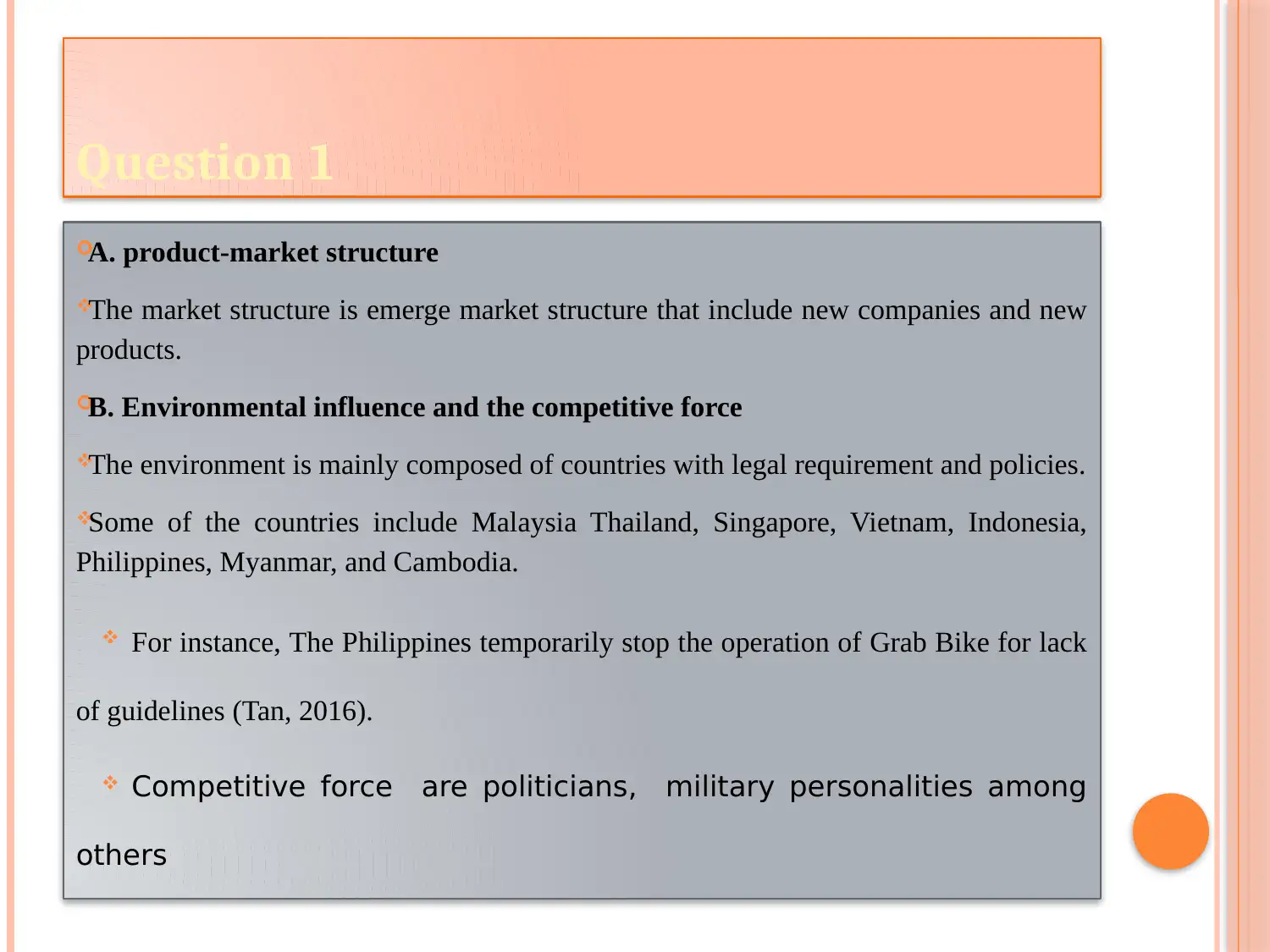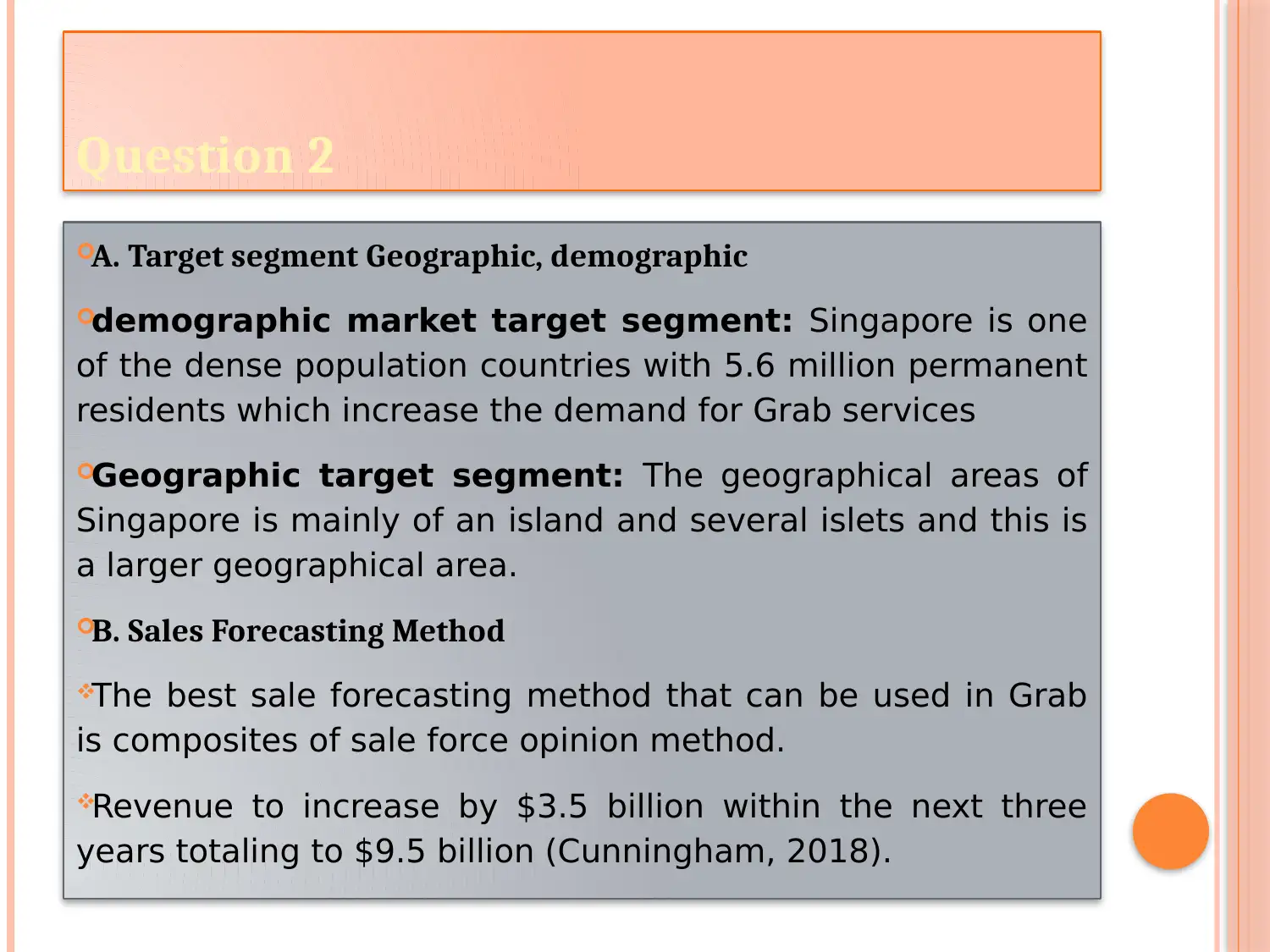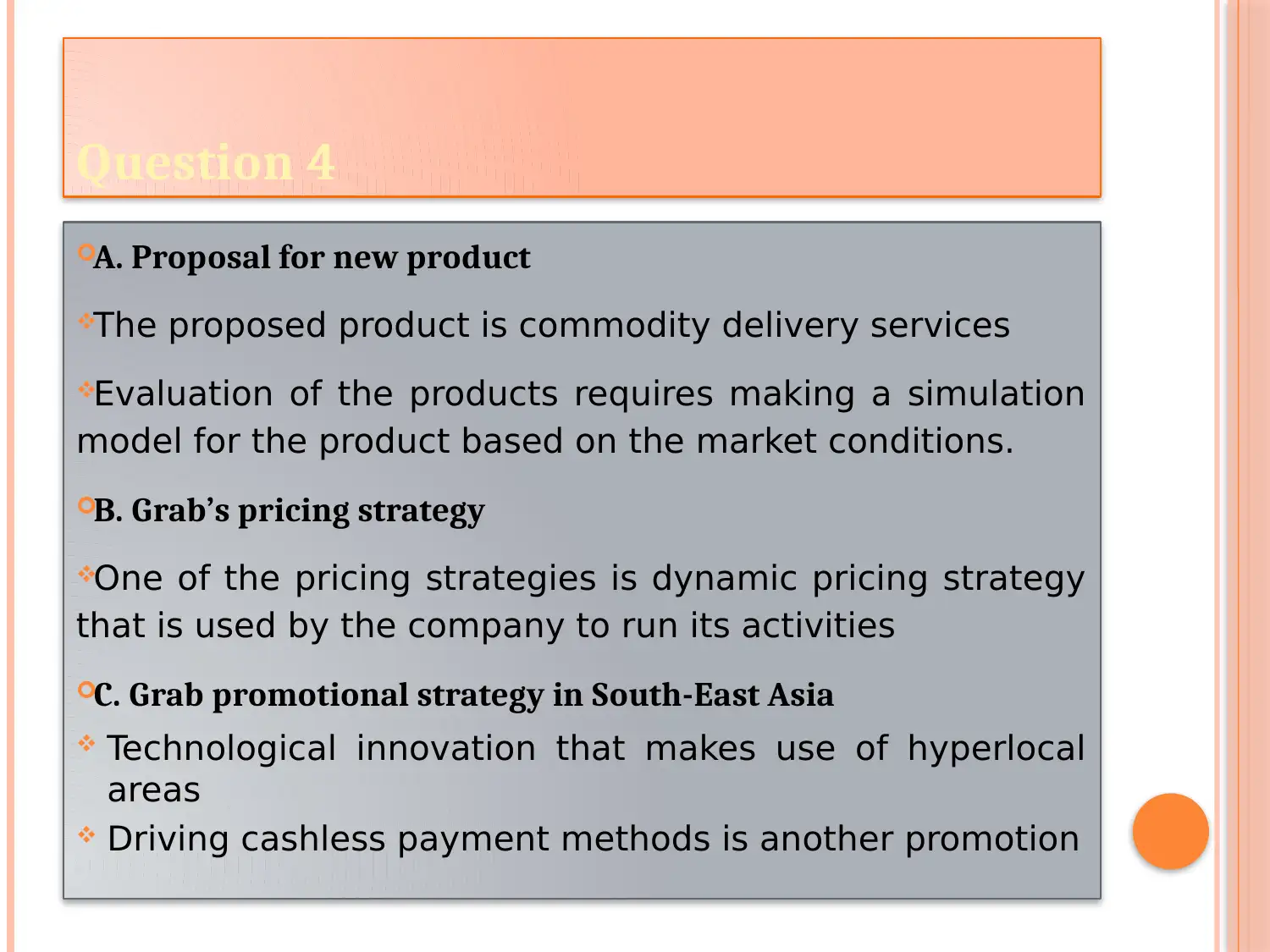Case Study on Marketing Management of GrabTaxi - SUSS MKT364
VerifiedAdded on 2023/06/12
|6
|554
|414
Case Study
AI Summary
This case study solution analyzes GrabTaxi's marketing management strategies, covering its product-market structure, environmental influences, and competitive forces. It identifies target segments using geographic and demographic data, proposes the use of composite sales force opinion for sales forecasting, and discusses Grab's CRM strategy dependent on registered data. The analysis also covers Grab's corporate social responsibility initiatives, opportunities, and threats, including competition from Uber. A new product proposal for commodity delivery services is suggested, along with an evaluation method using simulation models. The case study further examines Grab's dynamic pricing strategy and promotional strategies in Southeast Asia, emphasizing technological innovation and cashless payment methods. References to academic sources and news articles support the analysis and provide context to GrabTaxi's market position and strategies.
1 out of 6








![[object Object]](/_next/static/media/star-bottom.7253800d.svg)